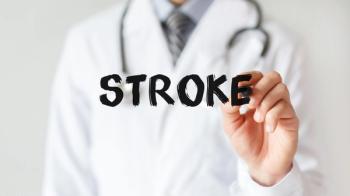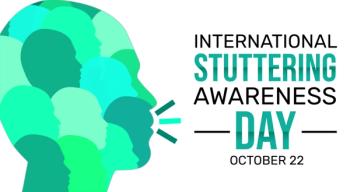
Stroke Researchers Look to Corticospinal Tract to Identify Rehabilitation Potential
Corticospinal tract (CST) integrity may predict the potential for clinical improvement in chronic stroke patients, according to a recent study. Winston Byblow, MSc, PhD, associate professor and director of the Movement Neuroscience Laboratory in the Department of Sport & Exercise Science at the University of Auckland, Australia, and colleagues used transcranial magnetic stimulation (TMS) and MRI to determine factors that predict functional improvement in a patient's upper limbs.1 In patients with motor-evoked responses (MEPs) to TMS, researchers found that meaningful gains were still possible 3 years after stroke, although the capacity for improvement declined with time. The researchers also created an algorithm to predict functional potential for upper limb recovery in this patient population.
Corticospinal tract (CST) integrity may predict the potential for clinical improvement in chronic stroke patients, according to a recent study. Winston Byblow, MSc, PhD, associate professor and director of the Movement Neuroscience Laboratory in the Department of Sport & Exercise Science at the University of Auckland, Australia, and colleagues used transcranial magnetic stimulation (TMS) and MRI to determine factors that predict functional improvement in a patient's upper limbs.1 In patients with motor-evoked responses (MEPs) to TMS, researchers found that meaningful gains were still possible 3 years after stroke, although the capacity for improvement declined with time. The researchers also created an algorithm to predict functional potential for upper limb recovery in this patient population (Figure 1).
These results suggest that physicians should consider evaluating the integrity of the CST, especially in centers that specialize in neurological rehabilitation and have access to TMS and MRI, said Byblow. "It is certainly possible to use the techniques and measures we describe to identify functional potential and prescribe a more tailored course of rehabilitation using our algorithm, and we hope that neurologists in rehabilitation units will consider this approach," he said. "Three years is a pretty big window for therapy. We have seen people 8 years after stroke obtain measurable changes in hand and arm function in our studies. If there is potential within the affected hemisphere for reorganization and good CST integrity, then use of the affected hand should stimulate plastic reorganization that may translate to better function down the road."
Using TMS and MRI, Byblow and colleagues examined 21 chronic stroke patients with upper limb impairment to determine the functional integrity of their CSTs. The presence or absence of MEPs to TMS in the affected upper limb and the lateralization of cortical activity during affected hand use were determined. The structural integrity of the CST was assessed using MRI, and diffusion tensor imaging (DTI) was used to measure the asymmetry in fractional anisotropy (FA) of the internal capsules. A multiple linear regression analysis was performed, which predicted both clinical score at inception and change in clinical score after 30 days of rehabilitative treatment of the affected upper limb.
Whereas meaningful gains could be achieved in patients with MEPs, functional potential declined with increasing CST disruption in patients without MEPs, and no meaningful gains were possible in these patients if FA asymmetry exceeded 0.25 (Figure 2). Using this data, Byblow and colleagues developed a fractional anisotropy asymmetry index to estimate the integrity of the posterior limb of the internal capsule in the stroke-affected hemisphere relative to the healthy side.
While techniques such as TMS and MRI have been reported as having some prognostic value, their role in determining whether a patient with stroke has reached full potential for rehabilitation had not been defined. Byblow said his study is the first to show that TMS measurements can be combined with quantitative MRI data to form a prognostic tool to evaluate potential for motor recovery after stroke. However, he said that worldwide, TMS is more commonly used as a research tool than for prognosis.
"Interestingly, MRI is more commonly used to evaluate the location and extent of lesions following stroke," he said. "Our study involved the use of DTI to provide essential information regarding CST integrity. This technique involves a sequence of diffusion-weighted images generated in multiple directions to evaluate isotropy-or anisotropy-throughout the brain. Anisotropic diffusion signals the presence of white matter-that is, axons. We have targeted a region known as the internal capsule-namely the posterior limb of the internal capsule, which is really a bundle of axons encompassing cells originating in motor cortical areas and projecting to the spinal cord."
Although this technique requires a few computational steps, a medical physics registrar can compute anisotropy. "DTI sequences are not difficult to obtain and will become more commonly used as the potential application of the technique is realized in various clinical contexts," he said.
A simpler way to determine a patient's potential for rehabilitation is to have the patient extend his or her affected wrist and fingers at the acute stage. Although this is a strong predictor of outcome, it may not be as useful at the chronic stage. That's where Byblow's algorithm (Figure 1) comes into play. The algorithm is unique because it combines the use of TMS and MRI to predict functional potential and also to identify a therapeutic target hemisphere for "priming."
"There is no use in employing therapies that target the affected hemisphere if the CST is damaged beyond a certain point," Byblow said. "Likewise, it would be advantageous to avoid strategies or activities that promote learned non-use of the affected hand if there is residual capacity for reorganization on the affected side. This could lead to overactivity of the contralesional hemisphere and is associated with poorer outcomes." Such new ideas about priming have shown promise in small trials.2
Byblow said he hopes researchers will use his algorithm in the design and evaluation of clinical trials of hand and upper limb rehabilitation. "Almost all trials to date are limited by sample heterogeneity," he said. "Our results provide a very objective way to stratify patients and may allow a more accurate evaluation of interventions such as constraint therapy, active-passive therapies, novel drug therapies, and other approaches that are geared toward priming the brain to be more responsive to therapeutic input."
The research has received considerable interest from the clinical neuroscience and neurology communities, said Byblow. He expects to receive funding from the Health Research Council of New Zealand to evaluate the algorithm in a larger group of post-stroke patients. "This will allow us to test the prospective application of the TMS and MRI techniques, and the algorithm, to see whether tailoring a person's rehabilitation according to his functional potential yields a better outcome," he said.
References:
REFERENCES1. Stinear CM, Barber PA, Smale PR, et al. Functional potential in chronic stroke patients depends on corticospinal tract integrity. Brain. 2007;130:170-180.
2. Hummel FC, Cohen LG. Non-invasive brain stimulation: a new strategy to improve neurorehabilitation after stroke? Lancet Neurol. 2006;5:708-712.
Newsletter
Receive trusted psychiatric news, expert analysis, and clinical insights — subscribe today to support your practice and your patients.

















